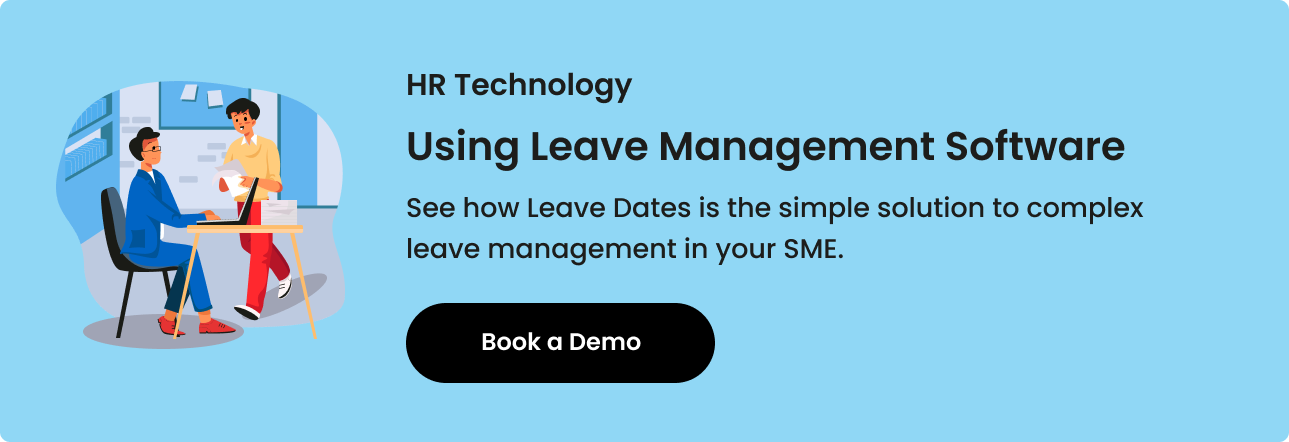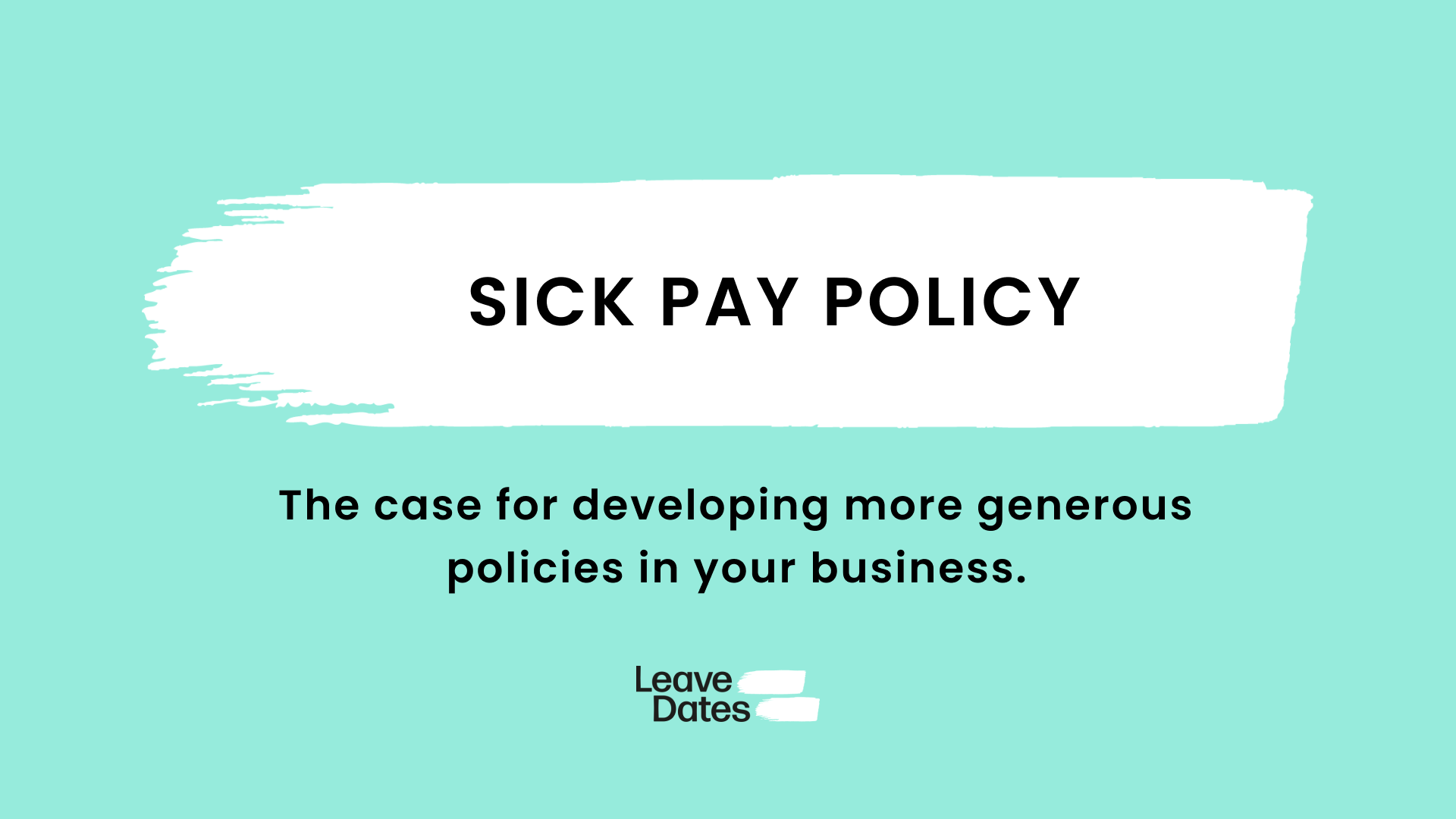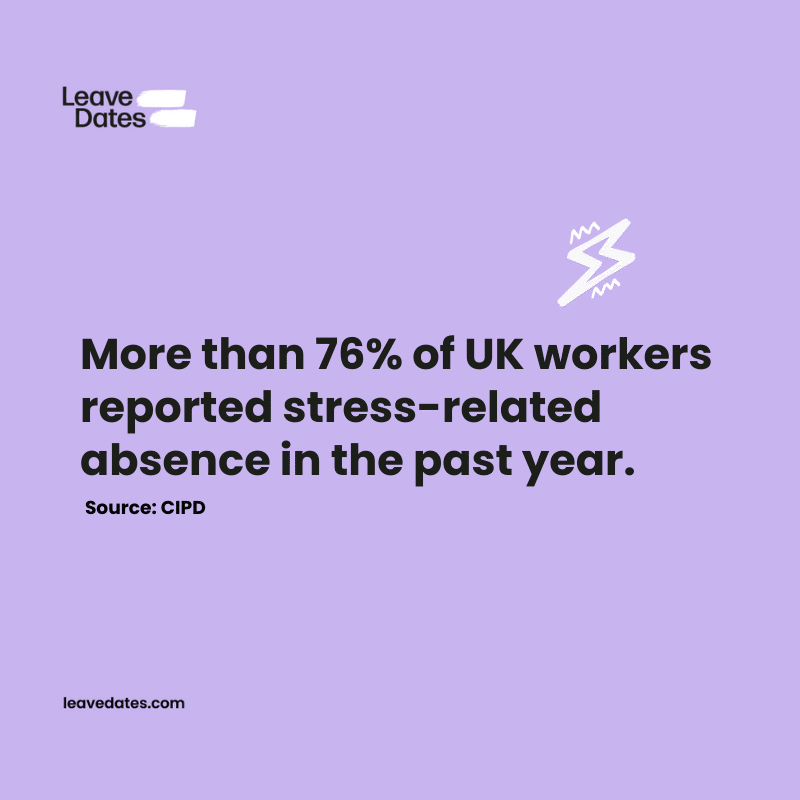
People get sick. That’s just an unfortunate fact of life. Nobody wants to get sick, nobody means to get sick – for the most part, it’s unavoidable. In a business that relies on people, sickness, and related absence (because sick people most definitely should be absent), is something that needs to be factored in and planned for. In HR language, this means a sick policy.
In general, a sickness policy dictates what procedures an employee needs to follow when they cannot work due to illness or injury of some form – who they have to tell, in what form, by what time and using what mechanism.
Table of contents
- Different types of sickness policy
- Issues related to sickness absence
- How to manage sick leave
- The importance of a sickness absence policy
- A healthy work culture
- Use of technology
- Key takeaways
Different types of sickness policy
Sickness can, of course, take an enormous range of forms, whether affecting mental or physical health.
As we shared recently here , 12.7% of sick leave is due to mental ill health. There is, fortunately, increasing recognition that mental ill-health is equally as common, important and potentially debilitating as a physical illness, and that conditions of both kinds may not necessarily be visible or apparent.
Staff Mental health days are an increasingly common offering that is helping to tackle issues of stress and burnout, with 30% of employers in the US saying they intend to offer specific mental health days.
Efforts toward greater inclusivity and understanding mean that some companies have also started to acknowledge the impact of menstrual cycles on female employees and allowed for sick days or flexible working arrangements where these are needed, as well as allowing time off in the wake of pregnancy losses or for fertility treatment.
In some cases, a sickness absence policy may also cover sickness of an individual other than the employee, for example if they are a carer for a chronically unwell or disabled family member.
As our understanding of what contributes to and detracts from our general health and happiness increases, our definitions of wellness may expand to include those in individuals’ immediate circle, knowing how interconnected people’s lives are and the impact that the burden of care can have on someone’s own mental and physical health.
Issues related to sickness absence
The business impact of sickness absence, while nowhere near close to the impact of unwell employees not operating at full health, is not insignificant. That said, there are ways to minimise this impact through a well-managed sickness absence policy and, more widely, through a health-promoting work culture that prioritises wellness.
You can have the best annual leave system and planner in existence, with all staff absence carefully coordinated and workloads planned in advance to ensure that all priorities and deadlines are met and operations run smoothly 100% of the time, but if someone unexpectedly phones in sick (and how often do we know we’re going to be ill?), that can all be thrown out of whack.
The big issue with sick leave, compared to annual leave, is that it’s typically unplanned.
This is why it’s so important to have the necessary tools to deal with this kind of absence and take a proactive approach to managing it – knowing that sickness absence will happen and getting policies and processes in place so that you’re never caught out.
Instead of panicking, which could result in a less than compassionate response to the unwell colleague, you can take swift and informed action to minimise business impact while protecting and promoting employee health and wellbeing.
Technology is a huge help in these situations, from all sides – communication, reporting, monitoring and planning – giving you the tools to be able to deal with the unexpected and to re-allocate and reorganise as needed. We’ll get into more detail on this later – first let’s look at some of the issues commonly associated with sickness absence.
It impacts productivity
The first and most obvious of these is the impact on staff productivity and the costs associated with this. At a simplistic level, absent employees are obviously not very productive. There is also the potential impact on business operations and service levels.
Yet it’s rare that every single task completed by one individual at work is urgent and/or hugely important. In their absence, their tasks can be reviewed and reprioritised to maintain minimum service levels and critical operations, without needing to cover every minute and task of the absent individual’s workday.
If any of the work they are supposed to be doing is business critical and/or time sensitive, this will need to be covered by someone else – if this is a colleague, then either their own work and priorities are neglected (reducing the overall productivity/output of the company), or their workload is increased (putting them under undue and undeserved pressure).
In the latter scenario, don’t be surprised if that employee phones in sick themselves the next week.
Placing the burden for accounting/covering for sickness absence onto other staff members will have a knock-on effect on morale and workplace culture.
If the unwell staff member can’t be covered by another, then agency/temporary staff or a contractor may be required, which of course comes at a cost to the business.
This all sounds fairly inconvenient for everyone, and it’s easy to see why many employees feel pressured into ‘presenteeism’, a common but ultimately unhelpful trend of showing up to work when sick, to avoid inconveniencing their colleagues or because they know their work cannot/will not be covered and that their return to work if they take time off to recover will be more stress than it’s worth.
This is unproductive and unhelpful in multiple ways, as the Covid-19 pandemic highlighted – it puts other staff members at risk, who may then be absent or less productive if they become ill themselves, which increases the overall burden of illness on the company.
Unwell individuals are not much more productive than absent ones, and they will be unproductive for longer – they won’t recover as quickly as they would if they took the time to recuperate at home.
How to Manage Sick Leave
From an HR and management perspective, there is also the challenge of how best to manage and monitor absence due to sickness, whether that’s to spot trends that might signify an issue with burnout and stress, identify where referral to a relevant service may be warranted, or identify potential abuse of the sickness absence policy.
Sickness and health are inherently, intensely personal, but businesses employ people, not robots (for now at least!). This means there is inevitably some overlap and points at which an employee’s personal issues become something an employer must be aware of, to a relevant degree.
There are of course legal and regulatory issues to consider, and the need for sensitivity, compassion and a duty of care
must be balanced with respect for privacy and the appropriate boundaries between employer and employee. Thus, good management practices are an essential part of a sickness absence policy and approach to health-related absence.
The Importance of a Sickness Absence Policy
Chief among these is the need to establish a comprehensive and fair sickness policy, and to take a supporting and non-punitive approach to enforcing it. This should include clear guidelines on reporting and documentation requirements and should be implemented consistently and fairly to prevent abuse or, just as importantly, under-use.
A policy with high reporting requirements or an approach to implementation that is underscored by suspicion may discourage employees from taking the sickness leave that they need, for fear of their illness not being ‘bad enough’ or the need to provide evidence (eg doctor’s note) for even a relatively minor ailment, which can place a heavy mental and physical burden on someone who is not feeling their best.
What would you rather, an overwhelmed staff member takes two days off, without the need for a doctor’s note, to recover from a brewing migraine and returns to work back to their usual self, or sticks it out, showing up but not able to accomplish anything of worth, only to later be signed off for a month due to burnout?
It is easy to see how a strict and bureaucratic sickness absence policy can lead to presenteeism, if it feels like it will be just as unpleasant to go through an extensive reporting and evidencing procedure as it will to just show up and try to get through the day.
A Healthy Work Culture
Second, is the promotion of a healthy and health-promoting work environment.
Clearly, the most effective way to minimise the issues caused by sickness absence is to avoid it altogether. This, of course, is not always possible and you should never compel employees to disclose any private health information, but fostering a culture of health and wellness within the organisation can be hugely effective.
Beyond reducing the immediate impact of sick leave, health-promotion is a worthwhile and immensely beneficial business value to uphold and ingrain in your workplace.
Depending on the size and means of the company, this could range from something as simple as encouraging and valuing work–life balance and allowing flexible working arrangements to accommodate employee needs, to the provision of health-focused perks and benefits.
These might take the form of gym membership or fitness class passes, wellness programmes and initiatives, private healthcare or dental care plans, or a canteen serving healthy food at affordable or subsidised prices.
While you cannot eliminate sickness absence altogether, these efforts will likely reduce it. Such benefits, alongside a compassionate and non-punitive sickness absence policy, will at the same time send your employees/colleagues the message that you care about them as people, not just as labour, and want them to be well.
At a wider level, and throughout the organisational hierarchy, there should be open communication, sensitivity and support.
Staff should be encouraged to communicate health issues early and given simple and discrete means to do so. Short-term absences should come with minimal reporting burden; for longer-term issues or arrangements, keep lines of communication open and provide resources and support (if desired).
A return-to-work procedure can help minimise any worry about handover or the stress of ‘catching up’ and facilitate a smooth transition.
Use of Technology
Technology has huge potential benefits in this space. The most important in terms of sickness absence is a digital employee leave planner, which can provide centralised and easily accessible recordkeeping, ideally with a self-service functionality for employees enabling them to report their absence and attach/upload evidence where required.
Who wants to have to talk on the phone with their boss when they’re feeling awful? It also means you can report your sickness earlier, as you don’t need to wait for the office to open or people to arrive at their desks to phone in, so they get more advance warning.
From a management perspective, a digital sickness leave tracking system enables streamlined tracking and reporting, with automated notifications and reminders, and can most likely be integrated with other HR systems and processes.
The analytics provided by such software can facilitate useful analysis of trends and patterns that can guide decision-making and diagnose/address any underlying issues.
Overall, technology can minimise the business impact of sick leave through improved efficiency in absence management and a lower admin burden for HR.
In making it easier to report absence, you remove the barriers that lead to presenteeism and longer-term (and thus more impactful) illness.

At a wider level, it provides the potential for greater discretion and sensitivity, avoiding the need for uncomfortable face-to-face conversations about highly personal matters with someone with whom one may not be familiar. It can also establish and protect boundaries that help people to feel safe at work.
For example, a young female new starter may not feel comfortable phoning her older, male line manager to report that she’s suffered a miscarriage. A digital reporting system could provide a function that allows the user to indicate any limitations on who they wish to be able to view their sickness report, eg by gender or management level.
This could be the difference between someone getting the space and time they need and deserve to recover from a traumatic experience, or struggling through due to embarrassment or discomfort and suffering greater consequences in the long term.
There are of course ethical considerations to take into account when using tech solutions to manage sick leave. Hugely important is the need to safeguard employee privacy and data protection. Your sick leave policy will need to make clear exactly how data will be stored and used.
Training and support will also need to be provided to ensure the technology is accessible and usable by all staff, to avoid any inequity in the benefits that are derived from it.
Key Takeaways
In any modern, respectful workplace, employee health and wellness, both mental and physical, should be a central concern and priority, now and into the future. The potential for technology to facilitate healthier working lives is huge, and the need for a healthy attitude to work has never been clearer in the wake of the recent pandemic. Presenteeism isn’t just bad for the unwell individual, it’s bad for everyone they work with and come into contact with.
We know we can work from home; we know we can stop working for a time and the world will not end; we know we can withstand huge shocks and changes to business operations and completely change the way we work, and that technology can support us in this.
There is no reason, in our technology-driven world where increasing amounts of routine tasks can be automated, that anyone should be working through sickness or afraid to ask for the time they need to get well.
Planned and unplanned leave is managed with zero stress on Leave Dates. Sign up for your free account and see how easy it is to keep your team's leave on track. Available on desktop and mobile.



